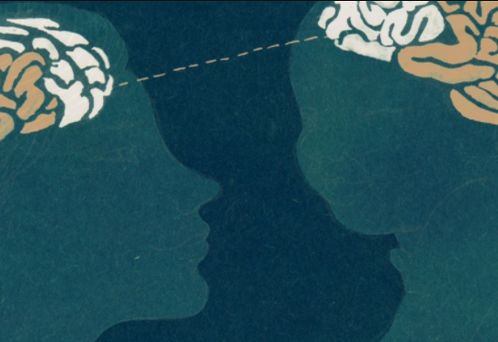Article: Scientists Discover Children’s Cells Living in Mothers’ Brains
Image from: http://www.iamamyrose.com/project/breakdown-or-breakthrough/
This article, published recently in Scientific American (December 2012), describes fascinating research on how children’s cells actually become a physical part of their mothers’ brains.
Not only is the information interesting, but I believe that it may be helpful in the visualization of birth. The research acts as a strong reminder to the pregnant woman that she and her baby are physically part of one another; that her baby is a real part of her own body. During her pregnancy, a woman may sometimes wonder or feel that her baby is something completely separate from and foreign to her own body, existing as a little entity encased within her and who will need at some point to exit her body. These thoughts can interrupt the woman’s understanding of how her baby is actually intimately connected to her body (as opposed to just encased within it) and of how this baby will, together with her, be part of the amazing physiological process of birth.
Meditations on how birth is a process shared between the birthing mother and her baby can greatly help the pregnant woman as she approaches her own labor, and her realization that children are an intricate part of the maternal body and brain is a powerful one.
Scientists Discover Children’s Cells Living in Mothers’ Brains
The connection between mother and child is ever deeper than thought
What it is that fetal microchimeric cells do in the mother’s body is unclear, although there are some intriguing possibilities. For example, fetal microchimeric cells are similar to stem cells in that they are able to become a variety of different tissues and may aid in tissue repair. One research group investigating this possibility followed the activity of fetal microchimeric cells in a mother rat after the maternal heart was injured: they discovered that the fetal cells migrated to the maternal heart and differentiated into heart cells helping to repair the damage. In animal studies, microchimeric cells were found in maternal brains where they became nerve cells, suggesting they might be functionally integrated in the brain. It is possible that the same may true of such cells in the human brain.
These microchimeric cells may also influence the immune system. A fetal microchimeric cell from a pregnancy is recognized by the mother’s immune system partly as belonging to the mother, since the fetus is genetically half identical to the mother, but partly foreign, due to the father’s genetic contribution. This may “prime” the immune system to be alert for cells that are similar to the self, but with some genetic differences. Cancer cells which arise due to genetic mutations are just such cells, and there are studies which suggest that microchimeric cells may stimulate the immune system to stem the growth of tumors. Many more microchimeric cells are found in the blood of healthy women compared to those withbreast cancer, for example, suggesting that microchimeric cells can somehow prevent tumor formation. In other circumstances, the immune system turns against the self, causing significant damage. Microchimerism is more common in patients suffering from Multiple Sclerosis than in their healthy siblings, suggesting chimeric cells may have a detrimental role in this disease, perhaps by setting off an autoimmune attack.
This is a burgeoning new field of inquiry with tremendous potential for novel findings as well as for practical applications. But it is also a reminder of our interconnectedness.
Are you a scientist who specializes in neuroscience, cognitive science, or psychology? And have you read a recent peer-reviewed paper that you would like to write about? Please send suggestions to Mind Matters editor Gareth Cook, a Pulitzer prize-winning journalist at the Boston Globe. He can be reached at garethideas AT gmail.com or Twitter @garethideas.
ABOUT THE AUTHOR(S)
Robert Martone is the Neuroscience therapeutic area lead for The Covance Biomarker Center of Excellence located in Greenfield, Indiana. He is a research scientist with extensive experience in drug discovery for neurodegenerative diseases
